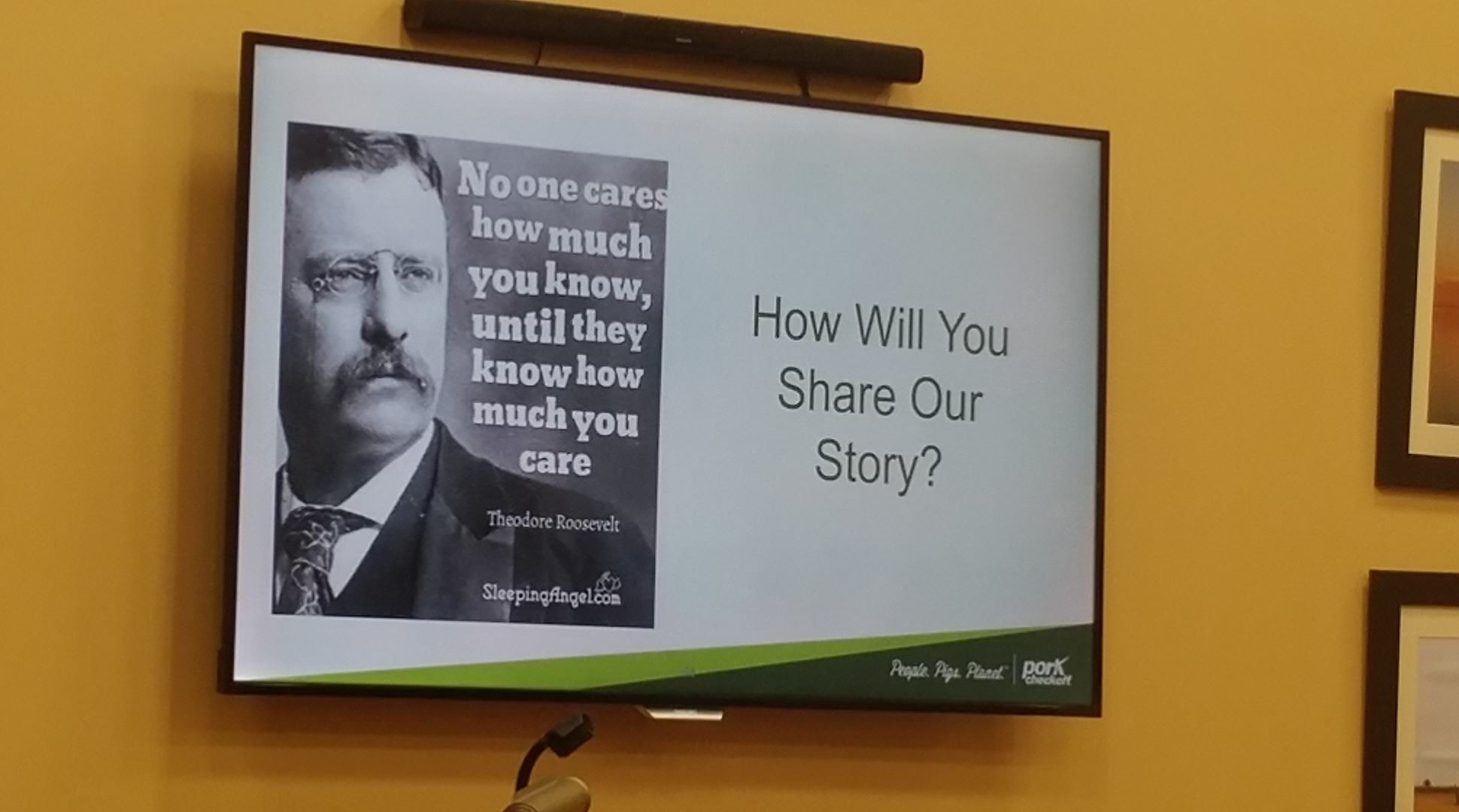by Carie Moore
Most ag commodities have a checkoff program that producers pay into to help promote and advertise the products they raise or grow. A few years ago, I was fortunate to attend a “See for Yourself” Pacific Northwest tour with the N.D. Soybean Association to see how checkoff dollars are put to use.
The pork industry has a checkoff program as well. I attended the Pork Council’s annual meeting last week, and most of the talk was about marketing and how it has changed over the last 50 years. The influence that Google and Amazon have on pork (and essentially millions of other) products is astounding. If you search for a pork recipe on your home computer, you expect ads for pork will be popping up soon. After seeing those ads, you then go to the grocery store to buy your pork for your recipe you googled earlier. The type of pork product you purchased may have been influenced by the pop-up ads you recently saw.
I also hadn’t thought about this until the question was asked, but how often do farmers see pork ads? It’s not in any of the farm magazines we get, so farmers often wonder, “Why am I not seeing ads with my dollars and where is it going?” Most farmers probably eat pork, so do we really need to be a target audience for placing dollars associated to advertising? Nope. The dollars are going to audiences who watch Chip and Joanna Gaines and want to have a BBQ in their newly shiplapped home. It’s going to the publications that are advertising for pellet grills and smokers, or family reunion get togethers.
The other interesting aspect in ag is research. Advancing products is one thing but there is also research that needs to be done when an outbreak or disease hits that you aren’t prepared for. Just getting the research started with grants and funding, a team, and products is over six months out. When you have an issue right now, that’s not super effective. Study and research on contamination, timelines, transmission, and so many other things take time. Sometimes problems break out and people want solutions right now. Things don’t happen over-night and can’t be fixed over-night. That’s why farmers and ranchers are vigilant and checking cattle and crops daily. They are always on the lookout for something out of place or abnormal. Issues with crops are harder to see, but with animals you can often see the difference in their behavior. If something is going on inside, other times, it is a fairly quick onset such as overnight.
Having amazing and qualified state vets are vital at the state and national level. Having herds identified and routine blood sampled and walk throughs are what keep the food system running efficiently and healthy at the farm level. They are in contact with other state vets and know of issues on the other side of the U.S. or the other side of the world. Farmers know animals in their herds, and vets know the difference between herds.
When you see the checkoff logo on an ag product, just know that is farmers’ dollars contributing to its success. There is a farmer behind that product and they raised it for you to consume, safely and enjoyably!
